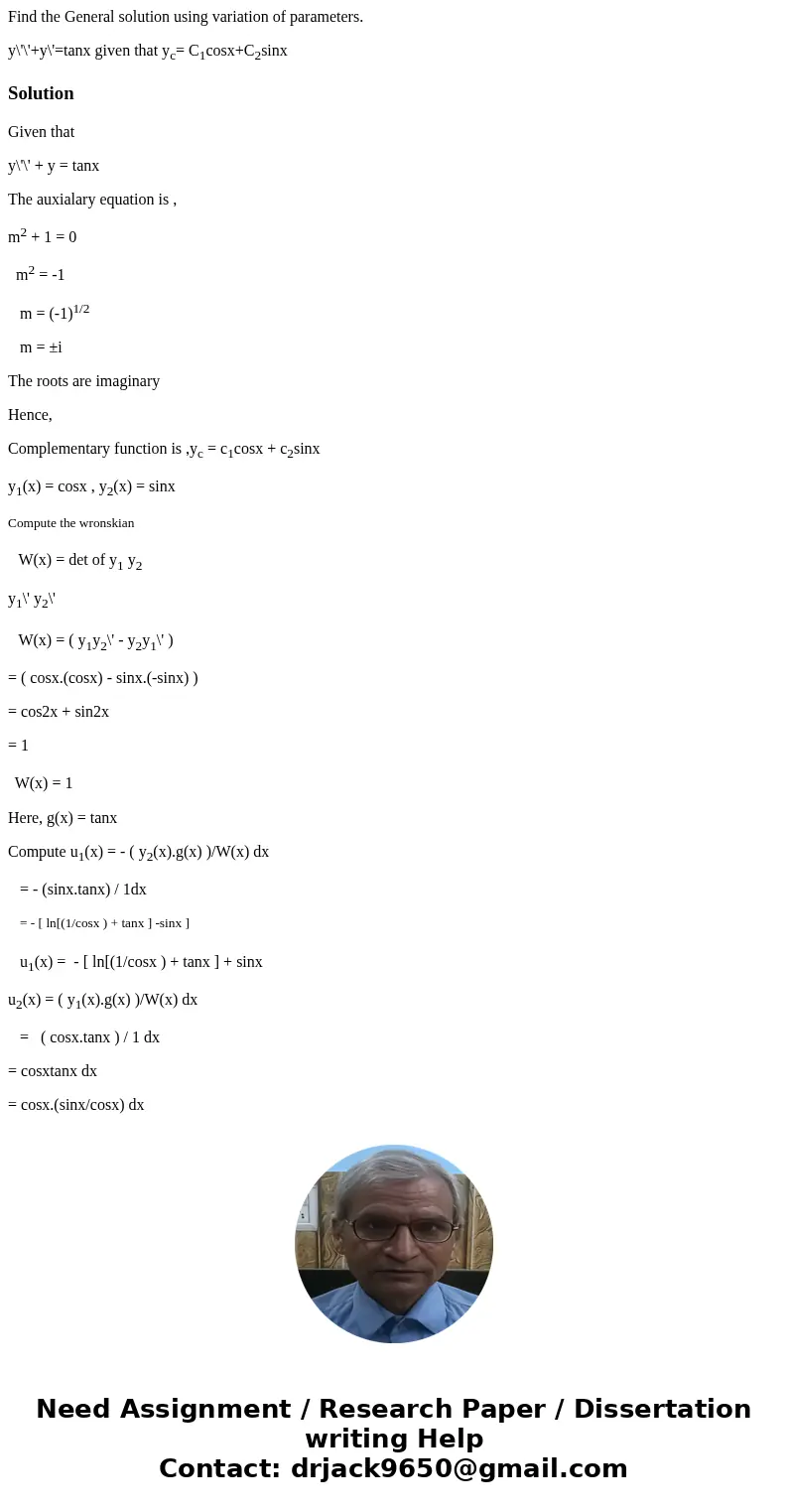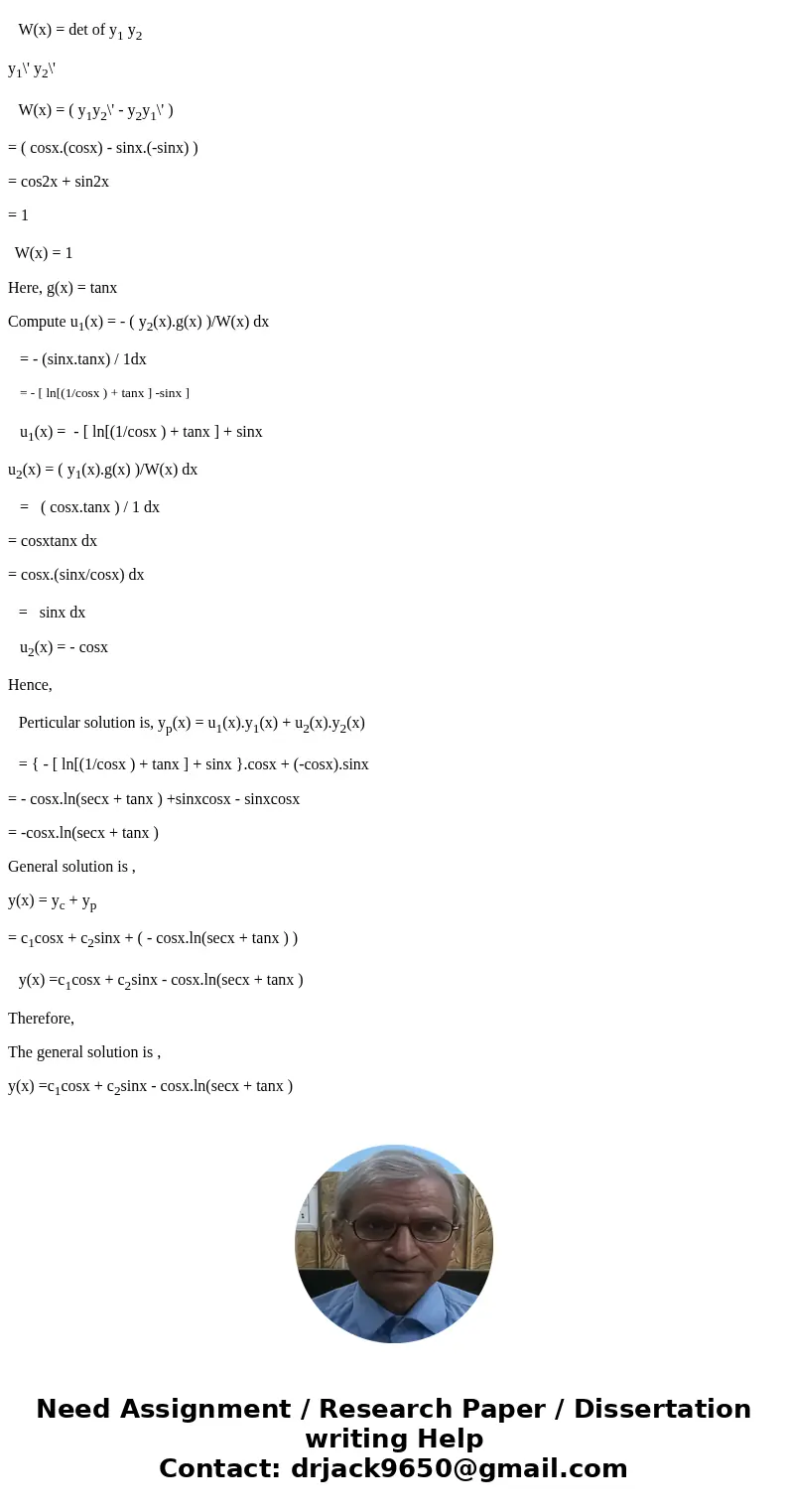Find the General solution using variation of parameters yyta
Find the General solution using variation of parameters.
y\'\'+y\'=tanx given that yc= C1cosx+C2sinx
Solution
Given that
y\'\' + y = tanx
The auxialary equation is ,
m2 + 1 = 0
m2 = -1
m = (-1)1/2
m = ±i
The roots are imaginary
Hence,
Complementary function is ,yc = c1cosx + c2sinx
y1(x) = cosx , y2(x) = sinx
Compute the wronskian
W(x) = det of y1 y2
y1\' y2\'
W(x) = ( y1y2\' - y2y1\' )
= ( cosx.(cosx) - sinx.(-sinx) )
= cos2x + sin2x
= 1
W(x) = 1
Here, g(x) = tanx
Compute u1(x) = - ( y2(x).g(x) )/W(x) dx
= - (sinx.tanx) / 1dx
= - [ ln[(1/cosx ) + tanx ] -sinx ]
u1(x) = - [ ln[(1/cosx ) + tanx ] + sinx
u2(x) = ( y1(x).g(x) )/W(x) dx
= ( cosx.tanx ) / 1 dx
= cosxtanx dx
= cosx.(sinx/cosx) dx
= sinx dx
u2(x) = - cosx
Hence,
Perticular solution is, yp(x) = u1(x).y1(x) + u2(x).y2(x)
= { - [ ln[(1/cosx ) + tanx ] + sinx }.cosx + (-cosx).sinx
= - cosx.ln(secx + tanx ) +sinxcosx - sinxcosx
= -cosx.ln(secx + tanx )
General solution is ,
y(x) = yc + yp
= c1cosx + c2sinx + ( - cosx.ln(secx + tanx ) )
y(x) =c1cosx + c2sinx - cosx.ln(secx + tanx )
Therefore,
The general solution is ,
y(x) =c1cosx + c2sinx - cosx.ln(secx + tanx )


 Homework Sourse
Homework Sourse